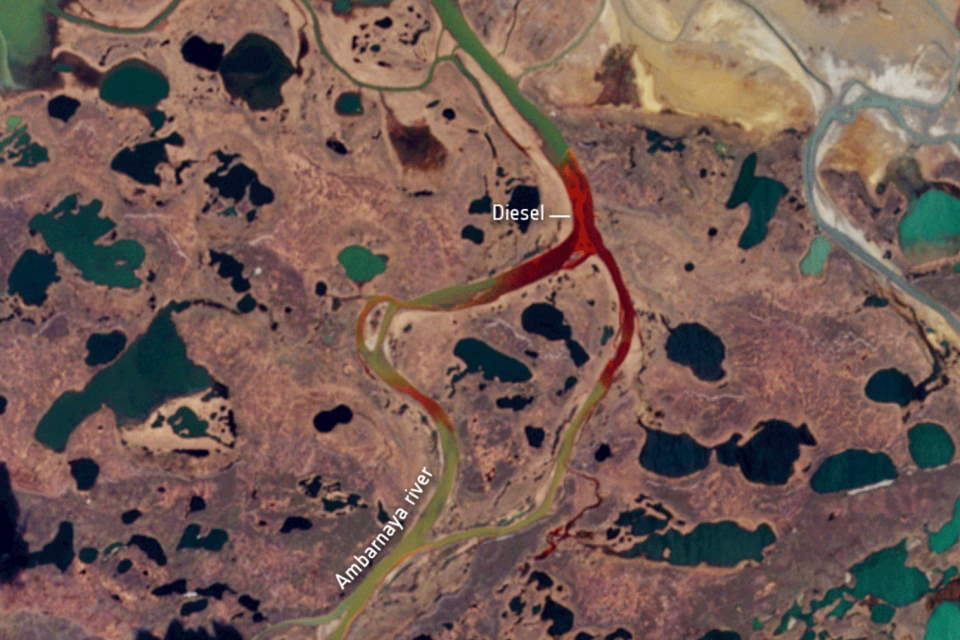Protecting air, land, water and ecosystems
Our society relies on the functioning of the natural environment and ecosystems, yet our activities have had negative impacts on the air we breathe, the climate, the land we inhabit and use to feed ourselves, and the water systems we rely on, while we have also seen accelerating rates of decline in the species that inhabit the Earth alongside us.
In order to protect air, climate, land and water and their ecosystems, we need to understand the processes and natural systems.This challenge includes understanding of: past, modern, and future climatic, environmental and ecological change; processes of biogeochemical cycling in different environments; pollution processes and impacts on air, land and water; and methods and policies of remediation and conservation.
This challenge theme supports the following UN Sustainable Development Goals:
![]()
A selection of published work:
de Sosa LL, Glanville HC, Marshall MR, Prysor Williams A, Jones DL. 2018. Quantifying the contribution of riparian soils to the provision of ecosystem services. Science of the Total Environment, vol. 624, 807-819
Abstract: Riparian areas, the interface between land and freshwater ecosystems, are considered to play a pivotal role in the supply of regulating, provisioning, cultural and supporting services. Most previous studies, however, have tended to focus on intensive agricultural systems and only on a single ecosystem function. Here, we present the first study which attempts to assess a wide range of ecological processes involved in the provision of the ecosystem service of water quality regulation across a diverse range of riparian typologies. Specifically, we focus on 1) evaluating the spatial variation in riparian soils properties with respect to distance with the river and soil depth in contrasting habitat types; 2) gaining further insights into the underlying mechanisms of pollutant removal (i.e. pesticide sorption/degradation, denitrification, etc.) by riparian soils; and 3) quantify and evaluate how riparian vegetation across different habitat types contribute to the provision of watercourse shading. All the habitats were present within a single large catchment and included: (i) improved grassland, (ii) unimproved (semi-natural) grassland, (iii) broadleaf woodland, (iv) coniferous woodland, and (iv) mountain, heath and bog. Taking all the data together, the riparian soils could be statistically separated by habitat type, providing evidence that they deliver ecosystem services to differing extents.
Overall, however, our findings seem to contradict the general assumption that soils in riparian area are different from neighbouring (non-riparian) areas and that they possess extra functionality in terms of ecosystem service provision. Watercourse shading was highly habitat specific and was maximal in forests (ca. 52% shade cover) in comparison to the other habitat types (7-17%). Our data suggest that the functioning of riparian areas in less intensive agricultural areas, such as those studied here, may be broadly predicted from the surrounding land use, however, further research is required to critically test this across a wider range of ecosystems
Access: Keele Research Repository
Dr Helen Glanville
Lecturer in Physical Geography
h.c.glanville@keele.ac.uk
de Sosa LL, Glanville HC, Marshall MR, Williams AP, Abadie M, Clark IM, Blaud A, Jones DL. (2018) Spatial zoning of microbial functions and plant-soil nitrogen dynamics across a riparian area in an extensively grazed livestock system. SOIL BIOLOGY & BIOCHEMISTRY, vol. 120, 153-164
Abstract: Anthropogenic activities have significantly altered global biogeochemical nitrogen (N) cycling leading to major environmental problems such as freshwater eutrophication, biodiversity loss and enhanced greenhouse gas emissions. The soils in the riparian interface between terrestrial and aquatic ecosystems may prevent excess N from entering freshwaters (e.g. via plant uptake, microbial transformations and denitrification). Although these processes are well documented in intensively managed agroecosystems, our understanding of riparian N removal in semi-natural systems remains poor. Our aim was to assess the spatial zoning of soil microbial communities (PLFA), N cycling gene abundance (archaeal and bacterial amoA, nifH, nirK, nirS, nosZ), N processing rates and plant N uptake across an extensively sheep grazed riparian area. As expected, soil properties differed greatly across the riparian transect, with significant decreases in organic matter, NH4+, carbon (C) and N content closest to the river (<10 m). In addition, different microbial community structures were found along the transect. The abundance of N fixation (nifH) increased with distance from the river (>10 m), while ammonia oxidising archaea (AOA) increased in abundance towards the river. N2O emissions rates were limited by C and to a lesser extent by N with greater emissions close to the river. Plant uptake of urea-derived 15N was high (ca. 55–70% of that added to the soil) but 30–65% of the N was potentially lost by denitrification or leaching. Percentage recovered also suggests that the spatial patterning of plant and microbial N removal processes are different across the riparian zone. Our study provides novel insights into the underlying mechanisms controlling the spatial variability of N cycling in semi-natural riparian ecosystems.
Access: Keele Research Repository
Dr Helen Glanville
Lecturer in Physical Geography
h.c.glanville@keele.ac.uk
de Sosa LL, Glanville HC, Marshall MR, Abood SA, Williams AP, Jones DL (2018) Delineating and mapping riparian areas for ecosystem service assessment. ECOHYDROLOGY, vol. 11(2)
Abstract: Riparian buffers, the interface between terrestrial and freshwater ecosystems, have the potential to protect water bodies from land‐based pollution, and also for enhancing the delivery of a range of ecosystem services. The UK currently has no defined optimal width or maximum extent of riparian buffers for specific ecosystem services. Here, we present the first study, which attempts to (a) compare and critique different riparian buffer delineation methods and (b) investigate how ecological processes, for example, pollutant removal, nutrient cycling, and water temperature regulation, are affected spatially by proximity to the river and also within a riparian buffer zone. Our results have led to the development of new concepts for riparian delineation based on ecosystem service‐specific scenarios. Results from our study suggest that choice of delineation method will influence not only the total area of potential riparian buffers but also the proportion of land cover types included, which in turn will determine their main ecosystem provision. Thus, for some ecological processes (e.g., pollutant removal), a fixed‐distance approach will preserve and protect its ecosystem function, whereas for processes such as denitrification, a variable‐width buffer will reflect better riparian spatial variability maximizing its ecological value. In summary, riparian delineation within UK habitats should be specific to the particular ecosystem service(s) of interest (e.g., uptake of nutrients and shading), and the effectiveness of the buffer should be ground‐truthed to ensure the greatest level of protection.
Access: Keele Research Repository
Dr Helen Glanville
Lecturer in Physical Geography
h.c.glanville@keele.ac.uk
Favretto N, Dougill AJ, Stringer LC, Afionis S, Quinn CH. 2018. Links between Climate Change Mitigation, Adaptation and Development in Land Policy and Ecosystem Restoration Projects: Lessons from South Africa. SUSTAINABILITY, vol. 10(3)
Abstract: Links between climate change adaptation, mitigation and development co-benefits in land policy and ecosystem restoration projects are hampered by limited understanding of how multi-faceted policy, institutions and projects interact. This paper explores perceptions of co-benefits produced by two community-level projects that pursue ecosystem restoration in South Africa. It develops a new analytical framework to assess the enabling and constraining factors in delivering triple wins for adaptation, mitigation and development. The aim is to investigate the potential for integrating community perspectives into policy and project development and implementation. Data collected through mixed-methods (policy analysis, semi-structured interviews, participatory site visits and focus groups) are analysed using thematic analysis. We find that while the projects investigated have potential to deliver triple wins, siloed approaches presently hinder effective implementation. In particular, project focus on job creation hampers the achievement of longer-term mitigation and adaptation benefits. Operational flexibility, long-term goals, multi-sectoral cooperation and enabling frameworks are imperative to the achievement of triple wins. Findings provide valuable lessons that can be applied across sub-Saharan Africa towards achieving triple wins in climate and development policy and practice, especially those developed with job creation and ecological restoration aims.
Access: Keele Research repository
Dr Stavros Afionis
Teaching Fellow in Environmental Politics
s.afionis@keele.ac.uk
Turney C, Fogwill C.J., Palmer J, van Sebille E, Thomas Z, McGlone M, Richardson S, Wilmshurst J, Fenwick P, et al. (2017) Tropical forcing of increased Southern Ocean climate variability revealed by a 140-year subantarctic temperature reconstruction. Climate of the Past, 13, pp.231-248
Abstract: Occupying about 14 % of the world's surface, the Southern Ocean plays a fundamental role in ocean and atmosphere circulation, carbon cycling and Antarctic ice-sheet dynamics. Unfortunately, high interannual variability and a dearth of instrumental observations before the 1950s limits our understanding of how marine-atmosphere-ice domains interact on multi-decadal timescales and the impact of anthropogenic forcing. Here we integrate climate-sensitive tree growth with ocean and atmospheric observations on southwest Pacific subantarctic islands that lie at the boundary of polar and subtropical climates (52-54#xB0; S). Our annually resolved temperature reconstruction captures regional change since the 1870s and demonstrates a significant increase in variability from the 1940s, a phenomenon predating the observational record. Climate reanalysis and modelling show a parallel change in tropical Pacific sea surface temperatures that generate an atmospheric Rossby wave train which propagates across a large part of the Southern Hemisphere during the austral spring and summer. Our results suggest that modern observed high interannual variability was established across the mid-twentieth century, and that the influence of contemporary equatorial Pacific temperatures may now be a permanent feature across the mid- to high latitudes.
Access: Climate of the Past open-access journal
https://www.clim-past.net/volumes.html
Director of the Institute for Sustainable Futures
Head of School; Geography, Geology and Environment
Professor of Glaciology and Palaeoclimatology
c.j.fogwill@keele.ac.uk
Brailsford F, Glanville H, Marshall M, Golyshin P, Johnes P, Yates C, Owen A, Jones D. 2017. Microbial use of low molecular weight DOM in filtered and unfiltered freshwater: Role of ultra-small organisms and implications for water quality monitoring. Science of the Total Environment, vol. 598, 377-384
Abstract: Dissolved organic matter (DOM) plays a central role in regulating productivity and nutrient cycling in freshwaters. It is therefore vital that we can representatively sample and preserve DOM in freshwaters for subsequent analysis. Here we investigated the effect of filtration, temperature (5 and 25 °C) and acidification (HCl) on the persistence of low molecular weight(MW) dissolved organic carbon (DOC), nitrogen (DON) and orthophosphate in oligotrophic and eutrophic freshwater environments. Our results showed the rapid loss of isotopically-labelled glucose and amino acids from both filtered (0.22 and 0.45 μm) and unfiltered waters. We ascribe this substrate depletion in filtered samples to the activity of ultra-small (< 0.45 μm) microorganisms (bacteria and archaea) present in the water. As expected, the rate of C, N and P loss was much greater at higher temperatures and was repressed by the addition of HCl. Based on our results and an evaluation of the protocols used in recently published studies, we conclude that current techniques used to sample water for low MW DOM characterisation are frequently inadequate and lack proper validation. In contrast to the high degree of analytical precision and rigorous statistical analysis of most studies, we argue that insufficient consideration is still given to the presence of ultra-small microorganisms and potential changes that can occur in the low MW fraction of DOM prior to analysis.
Access: Keele Research Repository
Dr Helen Glanville
Lecturer in Physical Geography
h.c.glanville@keele.ac.uk
Fogwill, C.J., Turney. C.S.M., et al. (2016) Antarctic ice sheet discharge driven by atmosphere ocean feedbacks at the Last Glacial Termination. Nature Scientific Reports, 7, Article number: 39979
Abstract: Reconstructing the dynamic response of the Antarctic ice sheets to warming during the Last Glacial Termination (LGT; 18,000–11,650 yrs ago) allows us to disentangle ice-climate feedbacks that are key to improving future projections. Whilst the sequence of events during this period is reasonably well-known, relatively poor chronological control has precluded precise alignment of ice, atmospheric and marine records, making it difficult to assess relationships between Antarctic ice-sheet (AIS) dynamics, climate change and sea level. Here we present results from a highly-resolved ‘horizontal ice core’ from the Weddell Sea Embayment, which records millennial-scale AIS dynamics across this extensive region. Counterintuitively, we find AIS mass-loss across the full duration of the Antarctic Cold Reversal (ACR; 14,600–12,700 yrs ago), with stabilisation during the subsequent millennia of atmospheric warming. Earth-system and ice-sheet modelling suggests these contrasting trends were likely Antarctic-wide, sustained by feedbacks amplified by the delivery of Circumpolar Deep Water onto the continental shelf. Given the anti-phase relationship between inter-hemispheric climate trends across the LGT our findings demonstrate that Southern Ocean-AIS feedbacks were controlled by global atmospheric teleconnections. With increasing stratification of the Southern Ocean and intensification of mid-latitude westerly winds today, such teleconnections could amplify AIS mass loss and accelerate global sea-level rise.
Access: Open access Nature
https://www.nature.com/articles/srep39979#abstract
Professor Chris Fogwill
Director of the Institute for Sustainable Futures
Head of School; Geography, Geology and Environment
Professor of Glaciology and Palaeoclimatology
c.j.fogwill@keele.ac.uk
Prost M and Otomo Y. 2016. British Influences on International Environmental Law: The Case of Wildlife Conservation. In British Influences on International Law 1915-2015.McCorquodale R and Gauci J-P (Eds.). London: British Institute of International and Comparative Law
Edited book abstract:
This book considers British influences on the development of international law over 100 years from 1915. This century has been marked by unprecedented developments in international law, not least the setting up of an array of international organisations, including the United Nations and the League of Nations, and international courts and tribunals (including the International Court of Justice and its predecessor the Permanent Court of International Justice, as well as the International Criminal Court). Two world wars, complex transboundary issues and increased globalisation have shown the importance of international law. This volume addresses these developments – domestic, regional and international - and looks at how Britain and British people (broadly defined) have influenced these changes.
The contributors to the book have examined an array of different issues. These include British influences on treaty-making, recognition and immunity, as well as on specific fields of international law, such as armed conflict, criminal law, environment and human rights. It has commentary on the British influence on the sources of international law, including by its courts and Foreign Office, in the development of the European Union and in the idea of a professional international lawyer. There are also reflections on many of the key people over the century.
The book provides a novel perspective, which surveys and appraises the contributions of British people and institutions in domestic and international legal forums and their key role in the development, interpretation and application of international law.
Access: Keele University Repository
Dr Mario Prost
Senior Lecturer in International Law
m.prost@keele.ac.uk
Abstract:The impacts of climate change are already being felt on human and environmental systems, with the brunt of the impacts being felt by communities in the Global South, particularly small-holder farmers due to their poverty levels and greater direct dependency on natural resources for their livelihoods. Hence, there is a need to understand how to build small-holder farmers’ resilience to climate change. Climate change adaptation strategies need to build livelihood resilience in the face of climate change as well as address the factors that contribute to farmers’ vulnerability. This chapter draws from a mixed-method study conducted in three villages each in a different agro-ecological zone in the Kilimanjaro region, Tanzania, to explore how to build farmers’ livelihood resilience through addressing factors that increase livelihood vulnerability to climate change. These farmers’ livelihoods are vulnerable because of both the impacts of climate variability on the farmers’ livelihood assets and certain social and environmental structures and characteristics. Building small-holder farmers’ livelihood resilience that can ensure the desired levels of livelihood outcomes in the face of climate variability and change, requires integration of strategies across household resource management as well as farm-based livelihood assets, and a holistic rather than piecemeal approach to small-holder farmers’ livelihoods.
Access: Springer Nature
Postgraduate Researcher
Samu Muwasha s.i.mwasha@keele.ac.uk


































